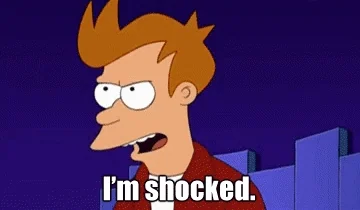Originally published at: Federal regulators take control of tech darling Silicon Valley Bank | Boing Boing
…
So… we’re going to pay for it. Again.
Awesome.
Mr Thiel enters stage right…
Citing people familiar with the matter, Bloomberg News reported that Founders Fund, the San Francisco-based venture-capital fund co-founded by Peter Thiel, had advised companies to pull their money from Silicon Valley Bank amid concerns about its financial stability.
Probably.
I’m sure the Feds (in the form of the FDIC) will be on the hook for the insured deposits, but according to an article in The Verge there was a recent regulatory filing stating that 90% of the deposits in that bank were uninsured, so a lot of those bank customers are likely to get screwed. Anyone with deposits in excess of $250k was very rational in trying to withdraw it when it became clear the bank may not be stable.
via CNN:
The FDIC said all insured depositors will have “full access” to their insured deposits by no later than Monday morning. The FDIC added it will pay uninsured depositors an “advance dividend within the next week” and they will receive a receivership certificate for the remaining amount of their uninsured funds.
To protect depositors, the FDIC said it created the Deposit Insurance National Bank of Santa Clara, which will hold all insured deposits of Silicon Valley National Bank.
The FDIC urged customers with accounts in excess of $250,000 to contact the FDIC.
I have no clue what assets are not affected by higher interest rates, or what the heck happened here.
Apparently the issue is SVB was wildly over-capitalised this time two years ago, with investors piling in to the tech sector as the big firms made huge mid-pandemic returns. So rather than closing deposit books (which is legally difficult, as far as I’m aware) and with a dearth of things to invest in (2020 was a bad year to be a startup), they bought the traditional “safe” asset, i.e. long dated bonds.
The conventional wisdom of the last 25-30 years is that long dated bonds are a great place to stash your money because you get whatever the stated yield is, guaranteed, for 5/10/20 years, backed by the Treasury. And of course interest rates would never go stupid high, leaving you stuck with underperforming long-dated assets that you couldn’t swap for short-dated ones… (this is what they mean by “assets affected by higher interest rates” - bonds pay out at nominal value, so a rate hike means they get much less attractive. Shares, on the other hand, are still worth x% of the underlying firm whatever their sale price was or is, so they should track the rate hikes)
This would be fine - except while this was happening, depositors at SVB also saw the Treasury rates go up, and started to go “well, I could make more elsewhere!” (because SVB has traditionally had pretty good deposit rates in a low-rate world; and now it’s a high-rate one). So those depositors pulled their cash out, and now SVB needed ready cash, and all they had was a loss-making bond portfolio to cover it. They have to sell their bond portfolio at a loss to cover the withdrawals, other depositors smell blood, and it’s all a conventional bank run.
So, really, this is almost a failure of capitalism, rather than outright greed. SVB wasn’t, in the grand scheme, this rapacious predatory lender - in fact, they were a really good deal for just about everyone involved. They did the “right” thing when they were overcapitalised. And it’s only because we had such a long, low rate, low risk world that it became normal, that when a predictable rate hike arrived, everything went all Mary Poppins.
Exactly. Depending on how many assets remain after the insured accounts are fully paid out there may not be enough left in receivership to make the others whole. They won’t lose everything but there’s definitely no guarantee they’ll get all that they’re owed.
Of course that’s the risk that any person or institution always takes if they deposit more than the insured amount in any given bank account.
Seems like a chicken-or-egg dilemma, though. Was it unstable before Thiel targeted it, or was the instability because of that targeting?
Welcome to BoingBoing! Great analysis and first post!
Seems like we’ve been down this gilded road before. Weren’t they going to regulate… stuff… so it wouldn’t happen again?

IKR! Home loan products such as subprime mortgages that contributed to the housing crash of '08 are still used today. ![]()
Well…we’ll just see what ChatGPT has to say about this!!
Welcome aboard, comrade, and thank you for the explanation.
Weird coincidence, last week article dated March 3:
SVB Financial Group (NASDAQ:SIVB – Get Rating) CEO Gregory W. Becker sold 12,451 shares of the firm’s stock in a transaction on Monday, February 27th. The shares were sold at an average price of $287.42, for a total transaction of $3,578,666.42. Following the completion of the transaction, the chief executive officer now directly owns 92,552 shares of the company’s stock, valued at approximately $26,601,295.84. The transaction was disclosed in a document filed with the Securities & Exchange Commission, which is available at this link.
Did he do a financial transaction to benefit himself on information that was not publicly known , as an ‘insider’ ? If so, wouldn’t that be “insider trading”?
Seems like if it walks and quacks, it may possibly be a duck?
For the interested reader, there is also a more technical explanation at Net Interest (which I can’t link because I’m new - “netinterest demise of silicon valley bank” in your search engine of choice will do the job), and in particular it’s worth noting that (1) SVB’s customer base had a lot of uninsured deposits ($150b or so of the $173b held on account), and there were not that many creditors overall - and (2) it’s likely that in reality, the uninsured depositholders will see a fair chunk of their deposits back in the medium term. SVB was following the current rules and has orderly risk management strategies for this stuff (what the Net Interest piece calls a ‘living will’), and although the bank is “illiquid and insolvent” (i.e. not enough cash, but also not enough value, to cover liabilities) it will probably get back most of what went in, because those long-dated bonds that sunk it, are not worthless, they just don’t have the yield they would need to be competitive.
The average person gets hit by crossfire.
Interest rates go up, probably because companies are sitting on lots of cash and have nowhere to invest it. Want the gov to give them better rates.
This gets blamed on home owners, and mortgages go up.

But maybe, finally, THIS will wake people up to the damage done by the wave of deregulation since Reagan? ![]()
Too early to say for sure, but this very well may turn out to be an example of regulation working as intended. The insured depositors will get paid back and, based on the public information available at this moment, it really looks like the bank will have enough assets to do that without costing the FDIC (or taxpayers) anything.
If this somehow leads to a wider “contagion” among banks we might be screwed though.
Edit to add: this bank’s circumstances sounds a lot like those of a lot of banks in the early stages of the S&L crisis of the 1980s, just before Reagan tried to fix the problem with deregulation and made the crisis much, MUCH worse.


